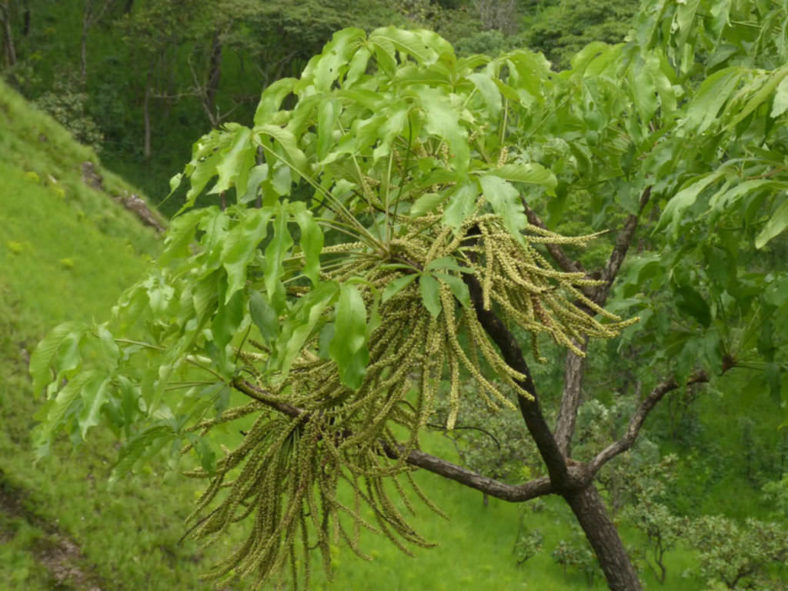Cussonia is a genus of about 22 species in the family Araliaceae. Geographically, the species are indigenous to sub-Saharan Africa, Yemen in the Arabian Peninsula, and the Comoro Islands. They occur in grasslands, woodlands, and forests, from sea level to over 6,500 feet (2,000 m).
The generic name honors the French botanist Pierre Cusson.
Due to their striking habit, Cussonias are a conspicuous and easily recognizable group of plants. They are squat to lanky shrubs and trees with a palm-like habit. Their leaves are typically grouped in umbrella-shaped arrangements at the tips of long, erect branches. The leaves are carried on long petioles and have conspicuous stipules. They are very variable in shape, often palmately compound with leaflets likewise variable in shape, but also simple or palmate. Their usually dense inflorescences are often spiked. The small flowers typically have five greenish petals. The stems and underground parts are succulent, and their bark is often corky.

Growing Conditions and General Care
Cussonias are easy to grow from seed and do not require much care. Most species are drought-tolerant and thrive in sunny locations. Protect them from frost and grow them in well-drained and slightly rich soil. These plants can handle an occasional mild frost, but a chill will make the leaves fall off. Water regularly.
All the members of this genus form a swollen stem base beneath the ground, and care must be taken not to damage it when planting out.
The best propagation method is by seeds harvested from fresh ripe fruits. Sow seeds as soon as possible, as they lose much of their viability within three months. However, seeds sown in the summer months will germinate faster (about four weeks) than in winter (about seven weeks). Make sure seed trays are at least 6 inches (15 cm) in depth to allow the small tubers to form. Do not allow the seeds to become waterlogged or dry out. Keep seeds and seedlings in a semi-shaded area. Seedlings can be transplanted at about four months, but be careful not to damage the fleshy roots when transplanting.
You can grow Cussonias by cuttings, but this is not advisable because they do not form the proper fleshy underground rootstock that they create when grown from seeds.
Links
- Back to genus Cussonia
- Succupedia: Browse succulents by Scientific Name, Common Name, Genus, Family, USDA Hardiness Zone, Origin, or cacti by Genus